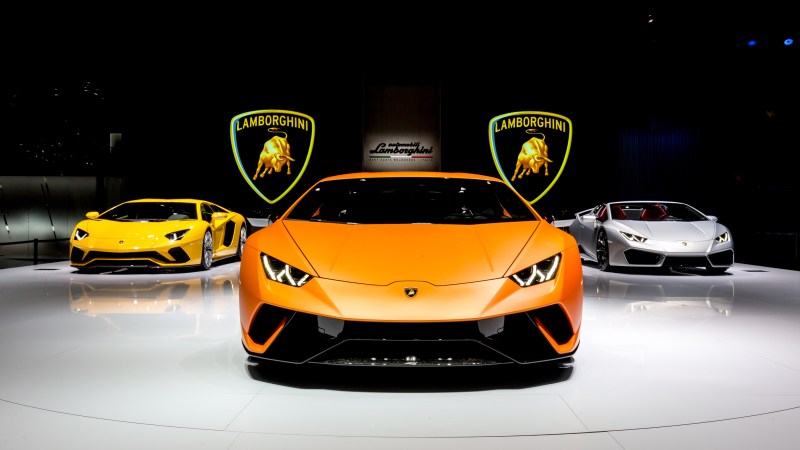Automakers often use teaser images and clips to hype up a new product introduction before the grand reveal, but Lamborghini decided to kick things up a notch.
Last week, the Italian supercar manufacturer sent its most extreme Huracan, the Performante, around the famed Nurburgring for a recorded lap. The result was a blistering time of 6 minutes and 52 seconds, five seconds quicker than Porsche’s 918 Spyder (which was the current record holder).
It was this “red carpet” of sorts upon which Lamborghini introduced its new model at this year’s Geneva Motor Show.
The Performante is not only the fastest Huracan, it’s also Lamborghini’s most powerful V10 model ever built. 640 horsepower and 443 lb-ft of torque is available from the same 5.2-liter V10 as the standard Huracan. Tweaks to the powertrain include a bronze manifold, new intake, and titanium valve exhaust. Like the LP610-4, power is sent to all four wheels via a seven-speed dual-clutch transmission. Top speed rises to 202 mph and 0 to 60 mph drops to just 2.9 seconds.
Beyond the extra power, Lamborghini has shed 88 pounds from the Huracan thanks in part to more extensive use of Forged Composite. The Performante also uses Aerodinamica Lamborghini Attiva (ALA), which is Italian for active aerodynamics. Specifically, the front and rear spoilers will adjust depending on a need for less drag or for greater downforce when cornering. These aerodynamic modifications have increased downforce by 750 percent over the regular Huracan. Yowza.
Inside the Huracan Performante cockpit, Forged Composite has been applied to the air vents, door handles, center console, and steering wheel paddles. The 12.3-inch digital driver display now will reconfigure depending on drive mode: Strada, Sport, and Corsa.
The Lamborghini Huracan Performante arrives this summer at a starting figure of $274,390.
















